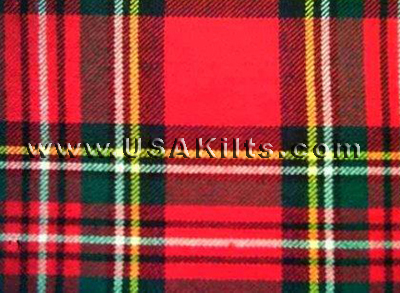
- Mill: Loch
- Weight: 16 oz.
- Clan Motto: Virescit vulnere virtus ("Courage Grows Strong at a Wound")
- Known Septs Include: Ballantyne, Bannatyne, Boyd, Carmichael, Caw, Clay, Combe, Combich, Combie, Conacher, Conlay, Conley, Cruickshank, Cruickshanks, Dennison, Denniston, Donlevy, Duilach, France, Francis, Fullerton, Fullarton, Garrow, Glass, Gray, Hunter, Jameson, Jamieson, Larnach, Larnack, Leay, Lennox, Levack, Lewis, Lisle, Livingston, Livingstone, Lombard, Lorne, Loy, Lumbard, Lyle, MacCaa, MacCammie, MacCaw, MacClay, MacCloy, MacCombe, MacCombich, MacCombie, MacComie, MacCurdy, MacDonleavy, MacElheran, MacGarrow, MacGlashan, MacKerron, MacKindlay, MacKinlay, MacKinley, MacKirdy, MacLae, MacLay, MacLea, MacLeay, MacLew, MacLewis, MacLouis, MacLoy, MacMichael, MacMune, MacMurtrie, MacNairn, MacNucator, MacRob, MacRobb, Malloy, Manteith, Milloy, Mitchell, Mitchelson, Monteath, Monteith, Moodie, Moody, Munn, Nielson, Robb, Sharp, Sharpe, Steuard, Steuart, Stuart, Walker.
- Notes:
The best known of all Scottish tartans, the Royal Stewart is the tartan of the Royal House of Stewart and the personal tartan of the reigning monarch. Theoretically it cannot be used or worn without the express permission of HM The Queen. In practice however, this is the most popular tartan ever woven and is now regarded as a Universal tartan (i.e. can be worn by ANYONE who has no clan tartan).
The pattern was first published by James Logan in his book, 'The Scottish Gael' in 1831, but references indicate that the sett was known at the end of the 18th century and it was reputed to have been worn by one of Bonnie Prince Charlie's followers in the 1745 rebellion. Early samples show the blue as a light 'azure'.
In their 1850 book 'The Clan and Family Tartans of Scotland' W. and A. Smith of Mauchline wrote: "The Stuart tartan here given is that for which many years has been universally believed in Scotland to be the Tartan worn by our Scottish Sovereigns. Sometimes it is woven with a small stripe of green, bisecting the broad red belt; but we know that this green stripe is a modern innovation, and therefore we exclude it having the best authority for doing so." The green line version was probably Stewart of Rothesay.
